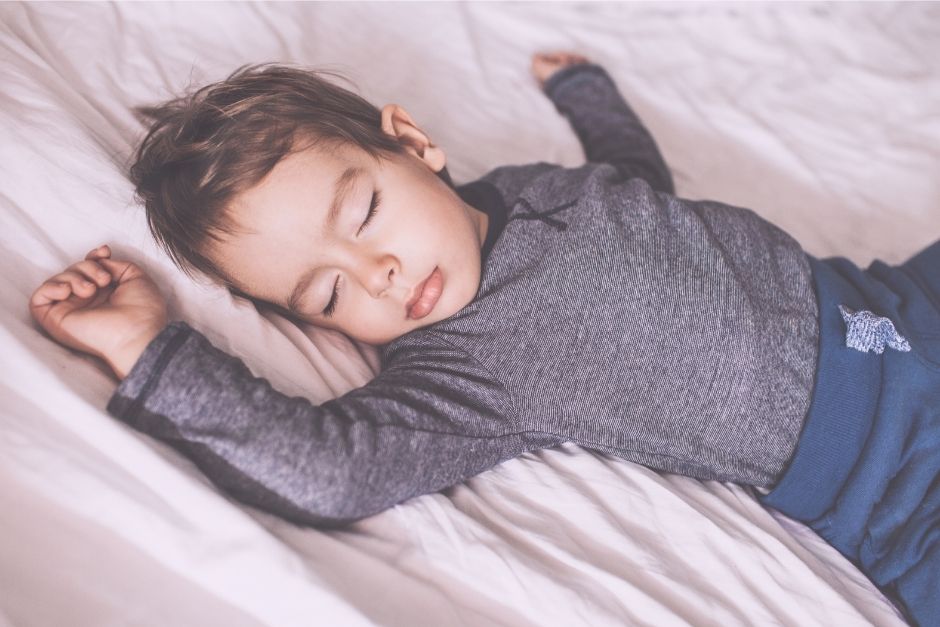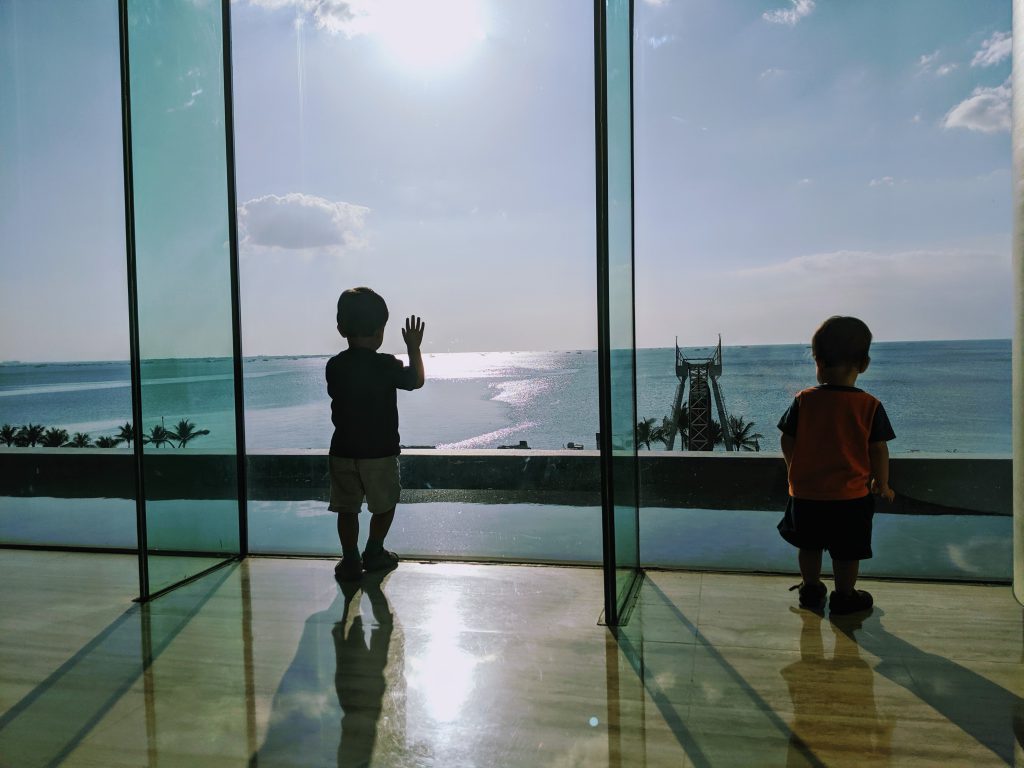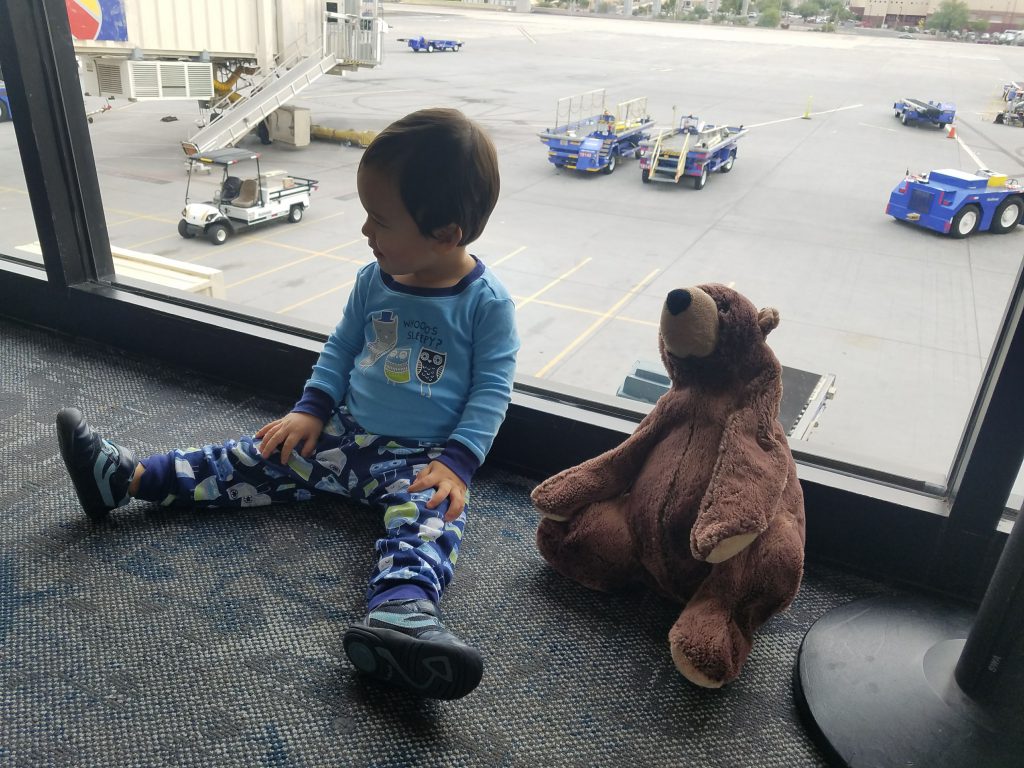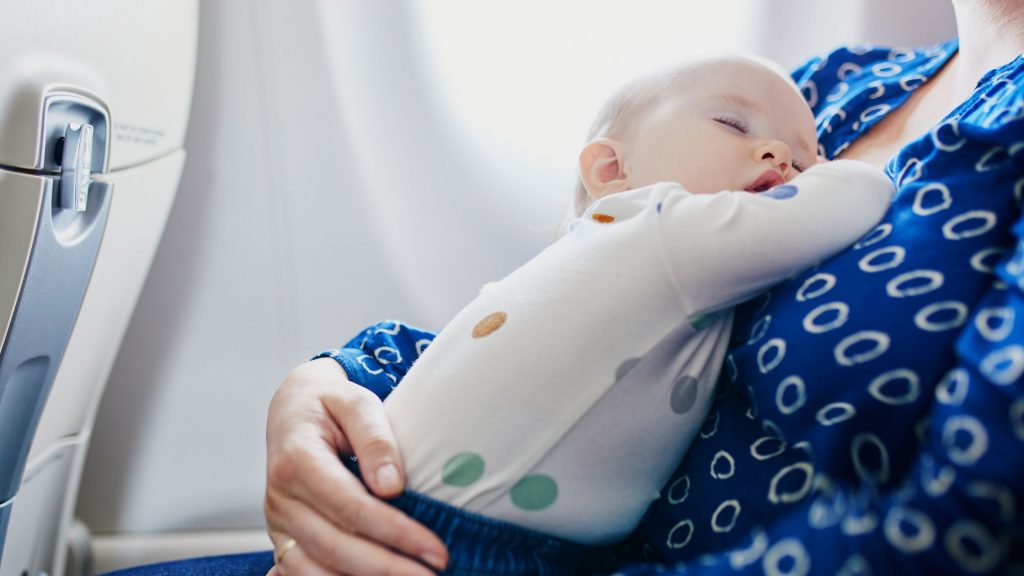This page may contain affiliate links, which means that we may earn from qualifying purchases at no additional cost to you.
Sanity-saving tips to combat baby and toddler jet lag!
Facing jet lag with babies and toddlers can seem quite intimidating. But while jet lag is a very real concern, there’s no reason it has to ruin your trip. With the right planning and strategies, you will be out having adventures with your well-rested baby in no time!
We’ve had a lot of trips with young kids and over the years we’ve found many different strategies to deal with the inevitable sleep challenges involved with traveling.
If you take the right measures, jet lag can be just a speed bump on the way to a fabulous family vacation!
Keep reading for helpful tips on reducing the effects of jet lag in babies and toddlers.
Be sure to also check out our tips getting a baby to sleep during travel, and our essential travel packing lists for babies and for toddlers!
Tips for reducing jet lag in babies and toddlers


1. Jump right into the new schedule
When you arrive at your destination, schedule naps, bedtime, and meals according to the new time as much as possible (with a little bit of leeway if you haven’t already been working towards this on the flight). This is one of the best things you can do to help everyone adjust and get on a good schedule sooner.
This is not without some growing pains, as it will often mean that you need to stretch your child’s wake time a bit as you help them adjust. In some cases, you might need some light snacks or a short additional nap in that first day or two if you’re dealing with a big time change.
You might also need a different approach depending on which direction you’re traveling.
If your child will be going to bed later than their normal time (eg. it’s 7 pm local time but at home it’s 10 pm), it’s usually easy to push them past their normal bedtime to help them get on the new schedule.
However, it’s usually more challenging if you are trying to get them to bed earlier than their body expects (eg. it’s 7 pm local time but at home it’s 4 pm). In that case, you may have to let them stay up a little later and then wake them up close to the desired local wake-up time the next morning. In that situation, make sure you leave time for a good nap the next day, but continue to push their nap and bedtime out later to get to your desired schedule.
2. Keep naps short
It can be tempting to let your young children nap as long as they want to after a long trip. The problem with this is that it increases the amount of time it takes them to adjust to the new time zone. And it makes it more likely that your child will wake up in the middle of the night. No fun for anyone.
Make sure that young kids get a good nap, especially those first few days, but try to keep it to just a couple of hours. And set an alarm! There’s a good chance you’ll fall asleep too and next thing you know it could be six hours later… Which may have happened to me a few times…and I always end up regretting it!
3. Don’t over plan the first day
When you arrive at your destination, don’t have too much scheduled for the first day. Everyone will be tired and will benefit from having a chance to recover from the travel.
If you have a lot of intensive activities planned you might be disappointed if tired and grumpy kids (and adults) don’t appreciate them as much as you’d hoped. And taking a little time to recoup in the beginning can make the rest of the trip go a lot more smoothly.
However, that does NOT mean that you should stay in your hotel room and sleep all day. Make sure to get out of your room, eat meals at the right time, and get some sunlight. More on that below.
4. Get out of the hotel and into the sunshine!


Studies have shown that sunlight is one of the most significant factors in regulating our body’s internal clock. Spending some time in the sun will help your body adjust to your new daylight hours, whereas staying indoors can prolong the effects of jet lag.
So take your kids outside! Especially in the first few days after you arrive.
I’ve found that one of the best things for helping my kids overcome jet lag is to get them out and about having experiences in their new environment. This is a great time to explore or have a flexible activity planned.
Plan to get out of the hotel, but aim for activities that are low-stress and flexible. And something your children will really enjoy!
5. Make nighttime feel like nighttime
Usually if we follow all of the tips above, our children do pretty well sleeping through the night from the very beginning. That being said, your child may wake up in the middle of the night those first few days.
If this happens, keep the lights low and let them know that it is still bedtime. They might be hungry, so be prepared to offer them a light snack. If they are wide awake, you might need to let them play quietly for a little while (have some quiet activities ready just in case). But then try to get them back to sleep within a couple of hours.
The key is to help their body realize that it is still nighttime. This will speed up the adjustment process and reduce the chance that they will wake up in the middle of the night the next night and the one after that…
And if they are up in the night, try not to let them sleep too late or nap too long the next day. Once again, that will only perpetuate the problem.
6. Bring something familiar from home


Besides the biological problems associated with jet lag, being in an unfamiliar environment can also make it harder to sleep. Combat this by bringing something from home that will make your child more comfortable.
This could be a favorite stuffed animal, blanket, or book. (After lugging an enormous stuffed Olaf all over Southeast Asia, I would suggest aiming for a small stuffed animal…) Some people swear by bringing the used sheet from your child’s crib or bed (the familiar smell and feel make them feel more at home).
Also, maintaining elements of their normal bedtime routine will help them settle in for the night. A warm bath, a familiar story, evening prayers…whatever they are used to. And black-out curtains and white noise are extremely useful for helping young children fall asleep and stay asleep on a trip.
7. Use a baby carrier
One of my favorite strategies for fighting jet lag with a baby or young toddler is putting them in the baby carrier if they refuse to go back to sleep. I find that often when in a new time zone, my babies will wake up in the early early morning and act like they are wide awake and ready to start the day.
So I pop them in the Ergobaby and put the sleep hood up (sometimes with the nursing cover over too depending on how much ambient light there is). Then I walk around, bouncing them gently until they fall back asleep.
This can take an hour or more, but to me that’s better than trying to entertain a baby at 4 in the morning. And trying to keep them quiet so they don’t wake up everyone in the hotel room (usually the baby is pretty content in the carrier as long as I’m moving or bouncing them).
I bring my Kindle and read a book while I walk around and then get a little more rest when they go back to sleep. For more on the benefits of babywearing while traveling, see this post.
*Note that this strategy only works if you’ve worked towards getting them on the new schedule. If you put them to bed at 4 p.m. and they wake up at 4 a.m., then they have had a full night’s sleep and are very unlikely to go back to sleep. However, if they went to bed at 7 or 8 there’s a good chance they can sleep a little longer.
It can be exhausting trying to help your children adjust while you’re fighting jet lag yourself. If you’re traveling with your spouse or another travel companion, try to share the burden.
My husband and I often do shifts if our kids are having a particularly rough night. He’ll stay up with a restless baby while I get some rest and then I’ll get up with our other son if he wakes up later in the night.
Or one of us will take our older son for an outing while the other takes a nap with the baby in the afternoon. Do whatever works for you, just make sure no one person is taking on too much.
Jet lag feels much more manageable when you’re not handling it alone. Discuss your strategy together before you leave so that everyone knows what to expect.
9. Maintain perspective
If you’re up at night with a jet-lagged baby, don’t let yourself get too discouraged. Recognize that they will sleep again! And you will too!
If your baby or toddler is having a hard time adjusting to their new sleep schedule, know that it’s a temporary problem that will get better.
FAQs


What is jet lag?
Jet lag is caused when your body’s normal rhythms are out of sync with a new time zone. It often happens when you travel across multiple time zones in a short period of time. Some common symptoms of jet lag are tiredness, difficulty focusing, headaches, and difficulty falling asleep.
How long does jet lag last in toddlers?
Jet lag usually only lasts a few days for toddlers. If you actively work towards getting them on the schedule of their new environment, they should start to adjust pretty quickly.
Although it can take up to a week for them to be fully acclimated, we’ve found that the first day or two are usually the hardest.
How do you help a child with jet lag?
The best way to help a child with jet lag is to help them adjust to their new schedule and be patient with the process. Manage your expectations about what you will be able to accomplish during those first few days while your child is adjusting.
How do you deal with toddler jet lag returning home?
Toddler jet lag on the return trip is usually easier to deal with simply due to the fact that you are in your own home. Your toddler doesn’t have to deal with the added stress of a new environment for sleep and daytime activities. And you don’t have to worry about your toddler or baby waking their siblings or other people in the hotel if they are up in the night.
You have more tools at your disposal to handle sleep problems and you’re not worrying about trying to get the most out of your trip.
In order to get your child back on a good sleep schedule at home, follow the same strategies that you would use when traveling such as putting them right back on the new time schedule and getting lots of sunlight.
Should I use melatonin to fight toddler jet lag?
We have personally have never used melatonin for our children, but some people rave about the benefits of melatonin in fighting jet lag.
Melatonin helps to regulate circadian rhythms by acting as a darkness signal to your brain. Small doses of the hormone have been shown to reduce the symptoms of jet lag in adults and children. If you feel this option might be right for you, do some research and talk to your pediatrician.
Final Thoughts
When traveling abroad with babies and toddlers (especially if you have more than one child), you’ll usually experience some elements of jet lag.
I find that it usually takes about two to three days for my children to be fully adjusted to the new time zone. But the effects of jet lag don’t have to be huge. In fact, if we do it right, we tend to find that it doesn’t significantly impact our trip at all.
By taking the right measures, you really can greatly reduce the negative impact of jet lag on yourself and your kiddos. And that is a huge step towards truly enjoying that much-anticipated family trip!


Other posts you might be interested in:
How to Get a Toddler to Sleep on the Plane (Tips that work!)
The Best Travel Toys for 1 Year Olds!
Baby Travel Essentials (Everything You Need to Bring)






Oh how I remember those days of long travel with small children. I think we just winged it. But I love the idea of starting with a sleep strategy. Short regular naps seemed to help our kids adjust. But they never were fussy sleepers – thankfully! I think it is a good idea to now overplay for kids and the rest of us too. I have found a little downtime when I first arrive keeps me going longer thru the trip. Maintaining perspective is great for anything you do with young ones. Some good tips here for people just starting to travel with small ones.
Thanks Linda! I agree, downtime at the beginning can make a big difference for your whole trip!
man, these are great tips on how to not only fight jet lag in babies and toddlers but also for adults. Heck, I might have to start bringing my Teddy Bear with me to help me recalibrate! I personally don’t like melatonin cause I have heard that it gives people very bizarre dreams and that would wake me up, but I agree, that Vitamin D from real sunshine is a great way to reset your internal clock as well.
Thanks Eric! You’ll have to try the teddy bear next time you travel and let us know how it goes. 🙂
I agree with your viewpoints, when my kid was small I used to carry the stroller. When we were busy admiring monuments, he would be sleeping. In toddlers case, I have realized warm milk definitely helps. It puts them to sleep easily. Though every child is different, so different tricks would work. And as you mentioned very well, parents know the best. Well written article.
A glass of warm milk is a great idea! Thanks for your comment Ramya!